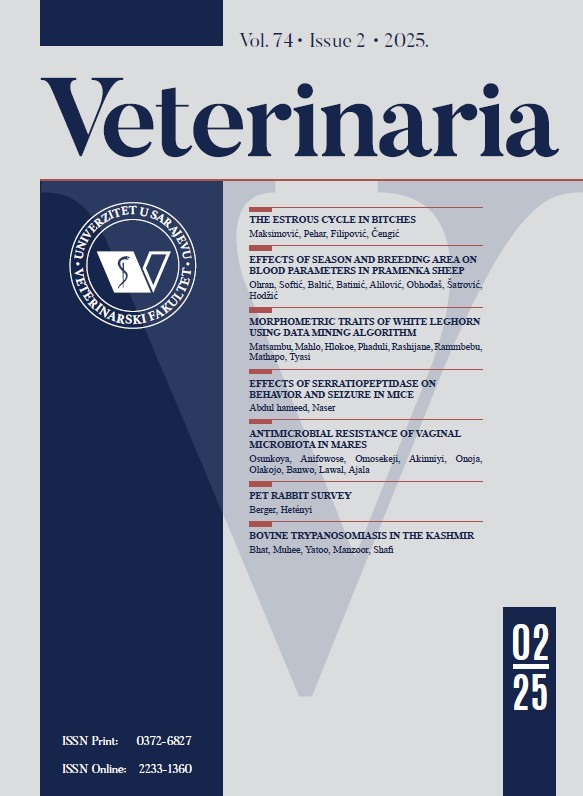Contamination of soil and vegetation with developing forms of parasites in Sarajevo Canton
Keywords:
Sarajevo Canton, parasites, contamination, soil, vegetationAbstract
The aim of the study was to investigate parasitic contamination of soil and vegetation on different locations in the Sarajevo Canton and to propose the rehabilitation measures. Among 55 locations sampled in the Canton Sarajevo in 2015, 33 (66%) were positive. In total, 220 soil samples and 80 plant samples were tested, and 59 (26.82%) and 12 (15%) were positive, respectively. Five different parasite-developing stages were determined. The highest level of contamination was detected in the parks (77.77%) and playgrounds (75%). Among 33 positive locations (60% of examined locations), taeniid eggs were detected in four (12.12%), Toxocara canis eggs in 32 (96.97%), Trichuris spp. eggs in nine (27.27%) and ancylostomatid eggs in six locations (18.18%), while nematode larvae were identified in 14 locations (42.42%). Out of 71 soil and plants positive samples, taeniid eggs were identified in four (5.63%) and Toxocara canis eggs in 50 samples (70.42%). Trichuris spp. eggs were found in nine (12.67%), ancylostomatid eggs in six (8.45%) and nematode larvae in 17 samples (23.94%). Concerning the public health aspect, it is crucial to reduce parasitic contamination by implementing adequate preventive measures in line with the legislation. Involvement of all concerned particularly pet owners (parents and children), veterinarians, physicians, and environmentalists, should be strongly encouraged with major emphasis on permanent education.
Downloads
Published
How to Cite
Issue
Section
License
Copyright (c) 2020 Jasmin Omeragić, Darinka Klarić, Ahmed Smajlović, Ćazim Crnkić, Davor Alagić

This work is licensed under a Creative Commons Attribution 4.0 International License.








